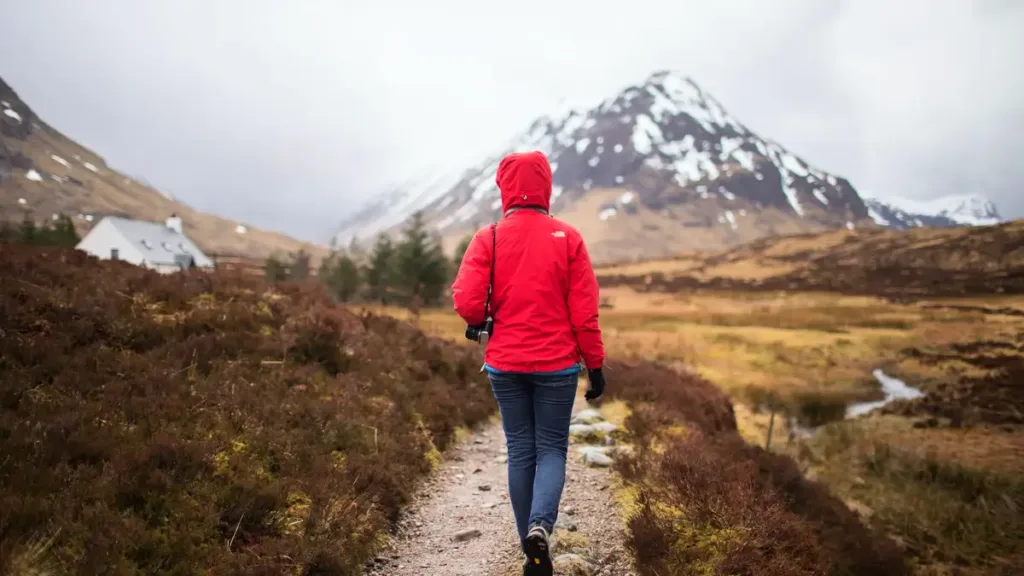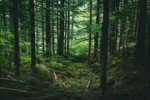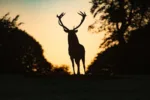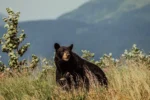What colors to wear for hiking: 3 important Aspects
This post may contain affiliate links. This means that we may receive a small commission from purchases through those links. Read more in our affiliate disclosure.
You’re about to embark on a grand hiking adventure. You’ve got your gear all sorted, your trail mix packed, and your enthusiasm cranked up to eleven. But then, you face the ultimate conundrum—what color should your hiking attire be? It might seem like a trivial detail, but as we’ll discover, the colors you wear can play a significant role in your hiking experience.
When choosing colors for your hiking attire, consider the climate, your visibility needs, and insect deterrence. Light colors reflect sunlight, keeping you cool in hot climates, while dark colors absorb sunlight, providing warmth in cold conditions. High visibility colors ensure you’re seen in low visibility conditions or during rescue situations, while earth-toned colors help you blend into your environment when observing wildlife or avoiding attention. Light colors are less attractive to some insects, and make it easier to spot bugs such as ticks on you.

The Fascinating Science of Colors
You’ve probably heard that color has an influence on our mood, perceptions, and behaviors. But, colors and their interaction with light also have much wider practical applications when it comes to hiking!
Light and Color
Light is a form of electromagnetic radiation that is visible to the human eye. And colors? Well, they are nothing more than different wavelengths of light that our eyes can detect. When light hits an object, some wavelengths are absorbed while others are reflected.
The color of the object is determined by the wavelengths that are reflected. If all wavelengths are absorbed, the object appears black. If all are reflected, it appears white. The science of this is detailed wonderfully by NASA, right here: NASA – Light and Color.
The Significance of Colors in Nature
Different colors have different levels of visibility in nature. Brighter colors like red and orange are easily visible even at great distances, because they reflect more light and stand out against the natural greens, browns, and blues of a typical outdoor scene.
There is another reason bright colors stand out to us: The only times colors like red, orange or yellow appear in nature is when a species is trying to signal something:
On an animal, it typically means “I’m poisonous, don’t eat me”, while on plants it’s often “Look at this tasty fruit, eat it (and carry the seed somewhere else)”. So, being good at noticing these colors quite directly benefits our survival.
On the other hand, natural colors like greens and browns blend well with the environment and make you less noticeable to animals and humans.
1. What colors to choose in different climates
The color of your clothes affects how much heat they absorb from the sun. Light is energy, so the more you absorb, the warmer you will be!
What colors to wear in hot and sunny weather
When you’re hiking under the scorching sun, you want to stay as cool as possible. This is where light-colored clothing comes into play. As we’ve discussed earlier, light colors reflect sunlight and help keep you cool. So, consider wearing whites, beiges, or light pastels when hiking in hot and sunny climates.
I remember this one time when I was hiking in the Grand Canyon. I made the rookie mistake of wearing a black t-shirt. Let’s just say, I learned my lesson the hard way. Now, I always pack my trusty white hiking shirt for sunny hikes.
What colors to wear in cold weather
On the flip side, if you’re hiking in cold, snowy climates, dark-colored clothing can be your best friend. Dark colors absorb sunlight and can help you stay warm in chilly conditions. So, think blacks, navies, or dark greens.
If you expect the weather to be variable during your hikes, you can get the best of both worlds by choosing the layers of your clothing accordingly: Use a dark-colored jacket to absorb the first beams of sunlight on a chilly morning, and underneath a light-colored shirt for those hot hours when the sun is at its peak.
These temperature considerations matter most when it’s sunny. When it gets overcast, dark, foggy or rainy, you should rather think about the visibility of your clothes:
2. Color Choices for Safety and Visibility
When to wear High Visibility Colors
High visibility colors, such as neon yellow, bright orange, red, or electric blue, are not just fashion statements in the hiking world. They serve a crucial purpose—ensuring you’re seen. This is particularly important if you’re hiking in areas where visibility is low, such as in foggy conditions or dense forests. High visibility colors can help you stand out against the natural backdrop, making it easier for others to spot you.
High visibility colors are also beneficial if you’re hiking in areas with hunting activity. Wearing bright colors can help distinguish you from game animals and ensure you’re visible to hunters. This is why hunters often wear “hunter orange” clothing.
Another scenario where high visibility colors can be beneficial is during rescue situations. If you’re lost or injured, wearing bright colors can make it easier for rescue teams to locate you. This is particularly important in vast wilderness areas where visibility from the air is often the key to successful rescues.
When to wear Camouflage Colors
On the other hand, there are situations where blending into your environment is beneficial or necessary. This is where earth-toned colors, such as greens, browns, and grays, come into play.
If you’re into wildlife watching or birding, wearing colors that blend into the environment can help you get closer to animals without startling them. Animals are less likely to be spooked by colors that match their surroundings, allowing you to observe them in their natural behavior.
Camouflage colors can also be beneficial if you’re hiking in areas where you want to avoid drawing attention to yourself. For instance, if you’re hiking in areas with potential security risks or where hiking is not common, blending into the environment can help avoid unwanted attention.
Furthermore, if you’re into wilderness photography, wearing earth-toned colors can help you blend into the environment and avoid becoming a distraction in your own photos. This is particularly relevant if you’re taking wide landscape shots where you might appear in the frame.
3. Color Choices for Bug and Insect Repellent
When it comes to hiking, bugs and insects are often part of the package. While they play a crucial role in the ecosystem, they can also be a nuisance, or in some cases, a health risk. Believe it or not, the color of your clothing can influence how attractive you are to these tiny critters.
Research has shown that certain bugs and insects are attracted to specific colors.
For instance, mosquitoes are known to be attracted to dark colors on the red end of the spectrum, but dislike blue or green.
Ticks, which often wait on tall grasses and shrubs to hitch a ride on passing animals (or hikers), probably don’t have a color preference themselves, but are much easier to spot on light-colored clothing.
This is one of the reasons that khaki pants are so very popular among hikers: They are not attractive to mosquitos, and make it easy to spot bugs.
Let me share a funny story from a hiking trip in Germany. I was wearing a bright yellow shirt, thinking it would be a cheerful color for a sunny day of hiking. Little did I know, this color was really attractive to a particular type of tiny black beetles.
As I was hiking, I noticed one or two beetles on my shirt. I didn’t think much of it at first. But as I continued on the trail, more and more beetles started appearing. Before I knew it, my bright yellow shirt was speckled with hundreds of tiny black dots. It was as if I was wearing a beetle magnet!
While it was a bit of a surprise, it was also a fascinating lesson in how colors can attract certain insects. I guess my shirt was the same color as their favourite flower, and the little beetles were disappointed to find I didn’t have any nectar.
So, what colors should you wear to repel bugs and insects? Light colors like white, beige, light green, or khaki can be a good choice. Not only are they less attractive to some insects, but they also make it easier for you to spot any bugs that do land on you.
Wrapping Up: The Colorful World of Hiking Attire
In the realm of hiking, your choice of clothing color can have a significant impact on your experience. It’s not just about aesthetics; it’s about practicality, safety, and even insect deterrence.
So, next time you’re preparing for a hike, give some thought to the color of your clothing. It might make more of a difference than you think!




